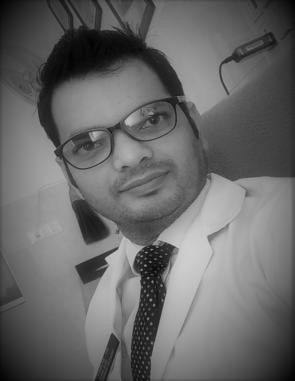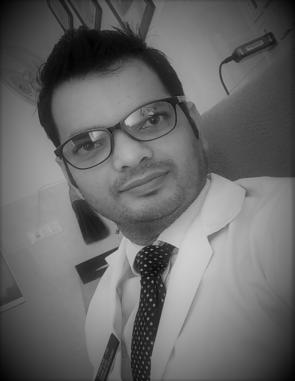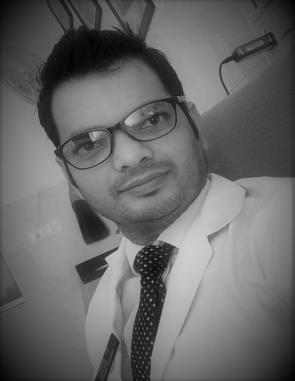Day 1 :
- Root Canal Treatment
Location: 1

Chair
Sumit Kumar Dangi
Dental Surgeon
Session Introduction
Sumit Kumar Dangi
Dental Surgeon
Title: MB2 in Upper First Molar: One of The Most Common Causes of RCT Failure.

Biography:
Dr Sumit Kumar Dangi was rewarded a BDS degree from D.J Dental college and research centre Modinagar (U.P) in November 2011. He has been practising as a dental surgeon since November 2018 at his Dental clinic in New Delhi. He was also a consultant dental surgeon from 2013 to 2015 at Saraswati Hospital, H.R. Furthermore, One of his articles (Dental Treatment During Pregnancy) has been published in dental update (Issue vol-12, No- 4, March-April 2014 at page no- 40) in South Asia Edition. He also lectured on Tooth discolouration after traumatic injury in 2015 in Brisbane(Australia) and was invited as a speaker in Dubai and Bangladesh in 2019 and 2017, respectively on the topic “ Dry Socket: A complication of tooth Extraction”. He also writes a blog for his group(Pathways' of dental sciences) on Face book which is followed by more than 12,000 Doctors around the world. Furthermore, When he gets time, he always loves to explore new places and spend time with his family or friends. He loves writing, reading, and watching moves and documentaries. He also does productive outdoor and indoor activities such as open gym, golf, pools, badminton, Chess and a few more.
Abstract:
The Upper first molar is one of the most complex and difficult teeth to treat in the oral cavity due to its root canal configurations. It could have one canal [1,2] to eight canals [3,4].It may have a single root[1,2]to four roots[5,6,7]. The location of the MB2 canal in the maxillary first molar is more complex due to its variable position (Near MB1 to the Palatal canal )and narrow foreman /orifice than any other root canal system in the oral cavity.That is why it hard to locate[17] by most dentists.Therefore,MB2 is one of the most missing canals in the upper molars that can lead to RCT failure sooner or later. Upto 95 per cent of the maxillary first molars contained at least four canals that required instrumentation to avoid RCT failure.
- Root Canal Treatment
Location: 1

Chair
Sumit Kumar Dangi
Dental Surgeon
Session Introduction
Sumit Kumar Dangi
Dental Surgeon
Title: MB2 in Upper First Molar: One of The Most Common Causes of RCT Failure.
Biography:
Dr Sumit Kumar Dangi was rewarded a BDS degree from D.J Dental college and research centre Modinagar (U.P) in November 2011. He has been practising as a dental surgeon since November 2018 at his Dental clinic in New Delhi. He was also a consultant dental surgeon from 2013 to 2015 at Saraswati Hospital, H.R. Furthermore, One of his articles (Dental Treatment During Pregnancy) has been published in dental update (Issue vol-12, No- 4, March-April 2014 at page no- 40) in South Asia Edition. He also lectured on Tooth discolouration after traumatic injury in 2015 in Brisbane(Australia) and was invited as a speaker in Dubai and Bangladesh in 2019 and 2017, respectively on the topic “ Dry Socket: A complication of tooth Extraction”. He also writes a blog for his group(Pathways' of dental sciences) on Face book which is followed by more than 12,000 Doctors around the world. Furthermore, When he gets time, he always loves to explore new places and spend time with his family or friends. He loves writing, reading, and watching moves and documentaries. He also does productive outdoor and indoor activities such as open gym, golf, pools, badminton, Chess and a few more.
Abstract:
The Upper first molar is one of the most complex and difficult teeth to treat in the oral cavity due to its root canal configurations. It could have one canal [1,2] to eight canals [3,4].It may have a single root[1,2]to four roots[5,6,7]. The location of the MB2 canal in the maxillary first molar is more complex due to its variable position (Near MB1 to the Palatal canal )and narrow foreman /orifice than any other root canal system in the oral cavity.That is why it hard to locate[17] by most dentists.Therefore,MB2 is one of the most missing canals in the upper molars that can lead to RCT failure sooner or later. Upto 95 per cent of the maxillary first molars contained at least four canals that required instrumentation to avoid RCT failure.
